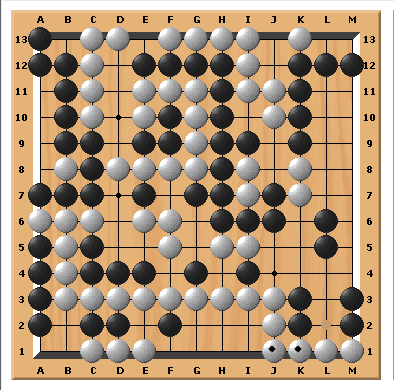Slither (2010) Board Game
Slither is an abstract strategy board game that was first released in in 2010. Designed by a web publisher, the game is best played with 2 players and has a runtime of around 40 minutes. With a recommended age of 10 and up, Slither falls into the category of abstract strategy games, focusing on pattern building as its main mechanism.
Game Components of Slither
How To Setup Slither
The game starts with an empty board. Each player has a designated color: Black and White. The setup is straightforward, with no initial stones placed on the board. The game begins with White’s first move, after which Black has the option to swap places with White using the pie rule or swap rule.
Gameplay Mechanics and Game Objective
– Black aims to connect the top and bottom edges of the board.
– White aims to connect the left and right edges of the board. Corners belong to both adjacent sides.
– Each turn consists of an optional relocation of an existing stone to an adjacent empty grid square, followed by a mandatory placement of a new stone in an empty grid square.
– A stone cannot be placed diagonally adjacent to another stone of the same color unless they are connected orthogonally by a common stone.
– In Advanced Slither, a stone can only be moved if it is part of an orthogonally contiguous group of stones consisting of both colors.
Player Experience
Slither offers a unique and dynamic gameplay experience, distinguishing it from other connection games. The ability to relocate previously played stones and the restrictive diagonal rule add complexity and strategy to the game. Players must balance the need to connect their designated edges with the need to maintain legal configurations of stones. The game is known for its robustness and depth, making it appealing to players who enjoy head-to-head competition without the element of luck.
Pros
Cons
Personal Thoughts on Slither
Slither is ideal for players who enjoy deep, strategic games and are looking for a challenge beyond the usual connection games. It is particularly suited for those familiar with games like Go, as it can be played on a similar board and shares some strategic elements. However, it may not be the best fit for casual players due to its complex rules and the need for strategic planning. If you’re looking for a game that offers a unique blend of strategy and dynamic gameplay, Slither is definitely worth trying out.
We are supported by our audience. When you purchase through links on our site, we may earn an affiliate commission, at no extra cost for you. Learn more.

